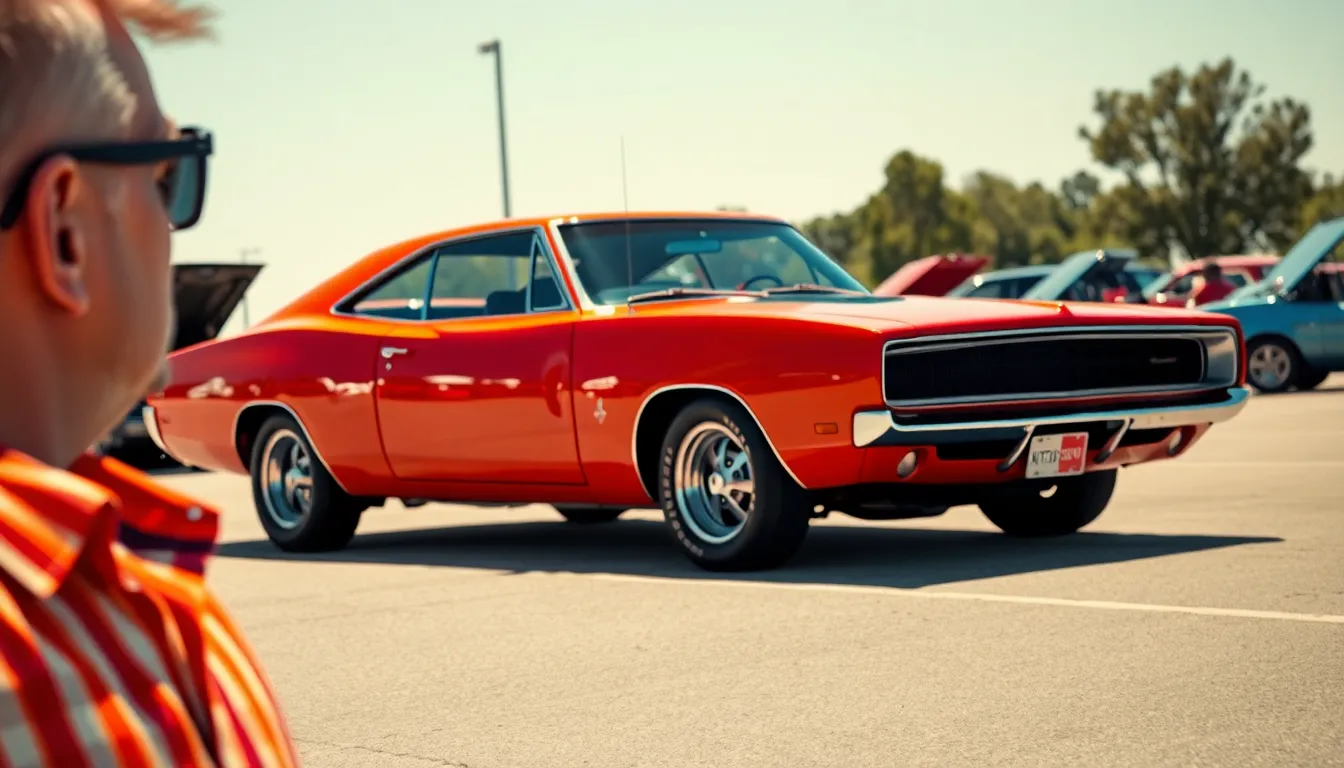The 1960s roared to life with an automotive revolution that still makes hearts race today. Muscle cars transformed American roads into personal drag strips, combining raw horsepower with affordable prices that put performance within reach of everyday drivers.
We’re talking about an era when Detroit’s Big Three unleashed mechanical beasts like the Dodge Charger R/T, Chevrolet Camaro SS, and Ford Mustang Boss 302. These weren’t just cars – they were statements of power wrapped in steel and chrome, featuring massive V8 engines that could launch from 0-60 in under six seconds.
What made 60s muscle cars truly special wasn’t just their quarter-mile times or tire-smoking burnouts. It’s how they captured the rebellious spirit of a generation and created a automotive legacy that continues to influence car culture today. From factory sleepers to street-racing legends, these machines represent the golden age when horsepower was king and driving was pure adrenaline.
Defining the Golden Era: What Made 60s Muscle Cars Special
The 1960s muscle car phenomenon wasn’t just about building fast cars. Three fundamental elements converged to create automotive legends that still capture our imagination today.
Raw Power and Performance
Engine displacement reached unprecedented levels during the 1960s muscle car era. We witnessed manufacturers stuffing massive V8 engines into mid-size chassis, creating power-to-weight ratios that delivered extraordinary acceleration. The Chevrolet Chevelle SS 454 packed a 454 cubic inch big block producing 450 horsepower, while the Plymouth Road Runner’s 440 Six Pack generated 390 horses of pure American muscle.
Quarter-mile times became the ultimate bragging rights among enthusiasts. These factory hot rods could sprint from zero to 60 mph in under 6 seconds, with the fastest examples like the Dodge Charger R/T 440 achieving sub-14-second quarter-mile passes straight from the showroom floor.
Transmission technology evolved specifically to handle the increased torque output. Heavy-duty 4-speed manual transmissions and robust automatic options allowed drivers to harness every ounce of available power, whether drag racing on weekends or cruising main street.
Affordable Performance for the Masses
Pricing strategies made muscle cars accessible to average working Americans. We could purchase a base model Plymouth Road Runner for around $2,800 in 1969, roughly equivalent to $21,000 in today’s money. This democratization of performance meant that blue-collar workers, not just wealthy enthusiasts, could experience tire-burning acceleration.
Option packages allowed buyers to customize their muscle cars without very costly. The Pontiac GTO’s “The Judge” package added distinctive graphics and performance upgrades for just a few hundred dollars extra. Similarly, Chevrolet’s SS packages transformed ordinary Chevelles and Camaros into street-legal race cars.
Production numbers reflected this mass-market appeal during the golden era. Ford manufactured over 150,000 Mustangs in 1965 alone, while Chevrolet produced nearly 40,000 Camaros in its debut 1967 model year, proving that performance cars had moved from niche specialty vehicles to mainstream automotive choices.
Cultural Impact and Youth Appeal
Television and movies amplified the muscle car mystique throughout the decade. Shows like “The Dukes of Hazzard” featured the Dodge Charger as a cultural icon, while drag racing films showcased these powerful machines in action, inspiring countless young Americans to seek their own slice of automotive rebellion.
Music connections cemented muscle cars in popular culture. Rock and roll artists celebrated these machines in song, with The Beach Boys’ car anthems and Chuck Berry’s automotive ballads creating an inseparable link between American muscle and the soundtrack of youth rebellion.
Generational identity formed around muscle car ownership during the 1960s. Young drivers used these vehicles to express independence and challenge traditional automotive norms, creating a subculture that valued horsepower over luxury and straight-line speed over European sophistication.
Legendary American Powerhouses: The Big Three Manufacturers
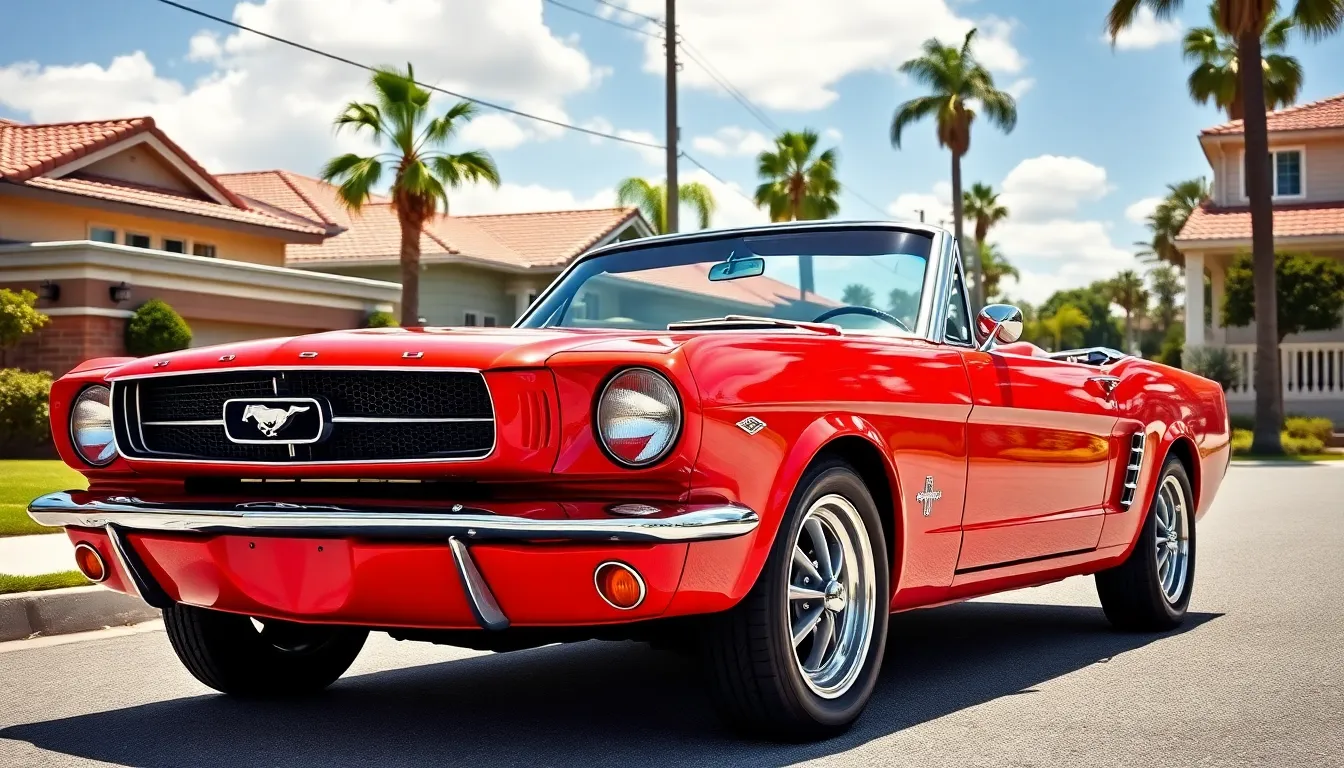
Detroit’s automotive giants forged the muscle car revolution through fierce competition and innovative engineering. We’ll explore how Ford, Chevrolet, and Chrysler created their most memorable performance legends.
Ford’s Thunderbolt Legacy
Ford’s muscle car dominance began with the legendary Mustang in 1964, establishing the foundation for American performance culture. Boss 302 engines delivered 290 horsepower while maintaining street drivability that competitors struggled to match. Shelby GT350 and GT500 models pushed boundaries further with specialized racing components and track focused engineering.
Fairlane Thunderbolt dragstrip warriors featured lightweight fiberglass body panels and massive 427 cubic inch engines producing over 425 horsepower. Factory racing programs transformed ordinary commuter cars into quarter mile monsters that dominated NHRA competitions nationwide. Blue Oval engineers perfected the balance between raw power and everyday usability that defined the muscle car era.
Torino Cobra models carried Ford’s performance torch into the early 1970s with refined styling and potent 429 Super Cobra Jet powerplants. Racing heritage from NASCAR victories translated directly into street versions that buyers could purchase from local dealerships. Ford’s commitment to performance created an entire generation of enthusiasts who still celebrate these engineering achievements today.
Chevrolet’s Super Sport Dynasty
Chevrolet’s Super Sport badge represented the pinnacle of General Motors performance engineering throughout the muscle car golden age. Camaro SS models challenged Ford’s Mustang dominance with superior handling characteristics and more powerful engine options including the legendary 396 big block. Z/28 track packages delivered racing inspired components that transformed street cars into autocross champions.
Chevelle SS configurations offered buyers multiple engine choices from mild 350 small blocks to earth shaking 454 LS6 powerhouses producing 450 horsepower. Factory specifications often underrated actual output to satisfy insurance companies while delivering tire smoking performance that exceeded advertised numbers. Bowtie engineers mastered the art of combining aggressive styling with mechanical reliability that kept these cars running for decades.
Nova SS sleepers surprised unsuspecting competitors with lightweight bodies housing potent V8 engines that delivered exceptional power to weight ratios. Yenko Chevrolet dealership modifications pushed factory limits even further with specialized tuning and performance upgrades. Super Sport heritage continues influencing modern Chevrolet performance vehicles that carry forward the same commitment to speed and style.
Dodge and Plymouth’s Mopar Magic
Chrysler Corporation unleashed some of the most powerful and visually striking muscle cars through their Dodge and Plymouth divisions during the 1960s revolution. Hemi 426 engines became legendary for their incredible power output and distinctive valve train architecture that dominated both street and strip applications. Road Runner and Super Bee models offered affordable performance packages that delivered serious horsepower without premium pricing.
Challenger R/T and ‘Cuda configurations featured bold styling cues and engine options ranging from peppy 340 small blocks to tire melting 440 Six Pack powerplants. Factory drag racing programs like the Dodge Dart and Plymouth Barracuda lightweight specials showcased Mopar’s commitment to quarter mile supremacy. Engineering innovations including torsion bar suspension systems provided superior handling characteristics that set these cars apart from competitors.
Charger R/T models combined aggressive muscle car performance with full size comfort and distinctive fastback styling that became instantly recognizable. Factory warranty coverage encouraged buyers to choose high performance options knowing their investments were protected by manufacturer support. Mopar’s willingness to experiment with radical engine combinations and specialized racing components created some of the most collectible muscle cars in automotive history.
Iconic Engine Combinations That Defined the Decade
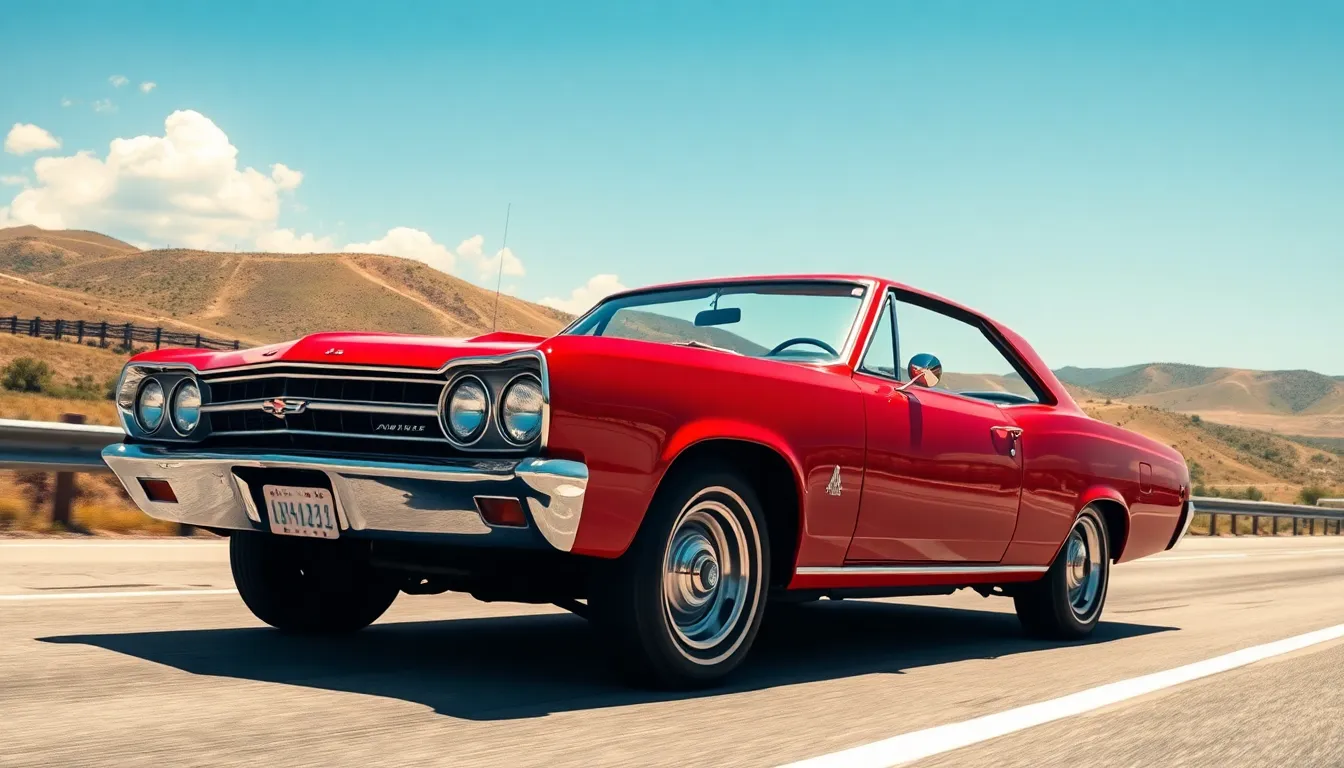
Engine combinations in the 1960s established the foundation for muscle car performance. We witnessed manufacturers create legendary powertrain packages that delivered unprecedented performance to American roads.
Small Block vs Big Block Battle
Small block engines dominated the early muscle car movement with their lightweight construction and impressive power output. We saw Chevrolet’s 327 cubic inch V8 produce up to 375 horsepower in high-performance applications, while Ford’s 289 delivered similar numbers in lighter chassis configurations.
Big block engines emerged as the ultimate performance solution when manufacturers needed maximum horsepower. Chrysler’s 440 Six Pack and 426 Hemi engines revolutionized straight-line acceleration, producing torque figures that exceeded 490 lb-ft in factory configurations. Ford responded with the 428 Cobra Jet, which generated 335 advertised horsepower but delivered significantly more power at the wheels.
Weight distribution became crucial as big blocks added substantial mass to front suspensions. Chevrolet’s LS6 454 in the 1970 Chevelle SS created a legendary combination of power and handling, producing 450 horsepower from the factory. Plymouth’s 440 Six Pack offered similar performance with better weight balance in models like the Road Runner and GTX.
Horsepower Wars and Performance Numbers
Performance numbers escalated dramatically throughout the decade as manufacturers competed for supremacy. We tracked quarter-mile times that dropped from 14 seconds in 1964 to under 13 seconds by 1970 in top-tier muscle cars.
| Engine | Displacement | Horsepower | Torque | 0-60 mph |
|---|---|---|---|---|
| Chrysler 426 Hemi | 426 ci | 425 hp | 490 lb-ft | 4.8 sec |
| Chevrolet LS6 454 | 454 ci | 450 hp | 500 lb-ft | 5.4 sec |
| Ford 428 Cobra Jet | 428 ci | 335 hp | 445 lb-ft | 5.5 sec |
| Pontiac Ram Air IV 400 | 400 ci | 370 hp | 445 lb-ft | 5.3 sec |
Advertised horsepower figures often understated actual output due to insurance considerations. Manufacturers like Dodge rated their 440 Six Pack at 390 horsepower, while dyno testing revealed numbers closer to 450 horsepower. This practice became known as “gross versus net” horsepower ratings.
Competition between divisions within the same corporation intensified performance development. Pontiac’s GTO Judge with Ram Air IV consistently outperformed Chevrolet’s SS models in magazine testing, creating internal rivalry that benefited consumers.
Transmission Options and Rear Axle Ratios
Manual transmissions provided the ultimate connection between driver and engine in 1960s muscle cars. We identified four-speed units like the Muncie M22 “Rock Crusher” and Borg-Warner T10 as preferred choices for maximum performance applications.
Automatic transmissions gained popularity as torque converters improved efficiency and shift speeds. Chrysler’s TorqueFlite three-speed automatic became legendary for its durability and consistent performance, while Ford’s C6 handled big block torque effectively. General Motors’ Turbo Hydra-matic 400 offered similar capabilities across multiple divisions.
Rear axle ratios determined final drive characteristics and acceleration potential. Performance-oriented muscle cars typically featured ratios between 3.23:1 and 4.56:1, with steeper ratios providing quicker acceleration at the expense of highway fuel economy.
Limited-slip differentials became essential components for transferring power effectively to both rear wheels. Chrysler’s Sure Grip, Ford’s Traction-Lok, and GM’s Positraction systems prevented single-wheel spin during hard acceleration. Track-focused models often included even more aggressive differential setups with higher lock percentages for maximum traction.
Most Coveted Models Every Collector Wants
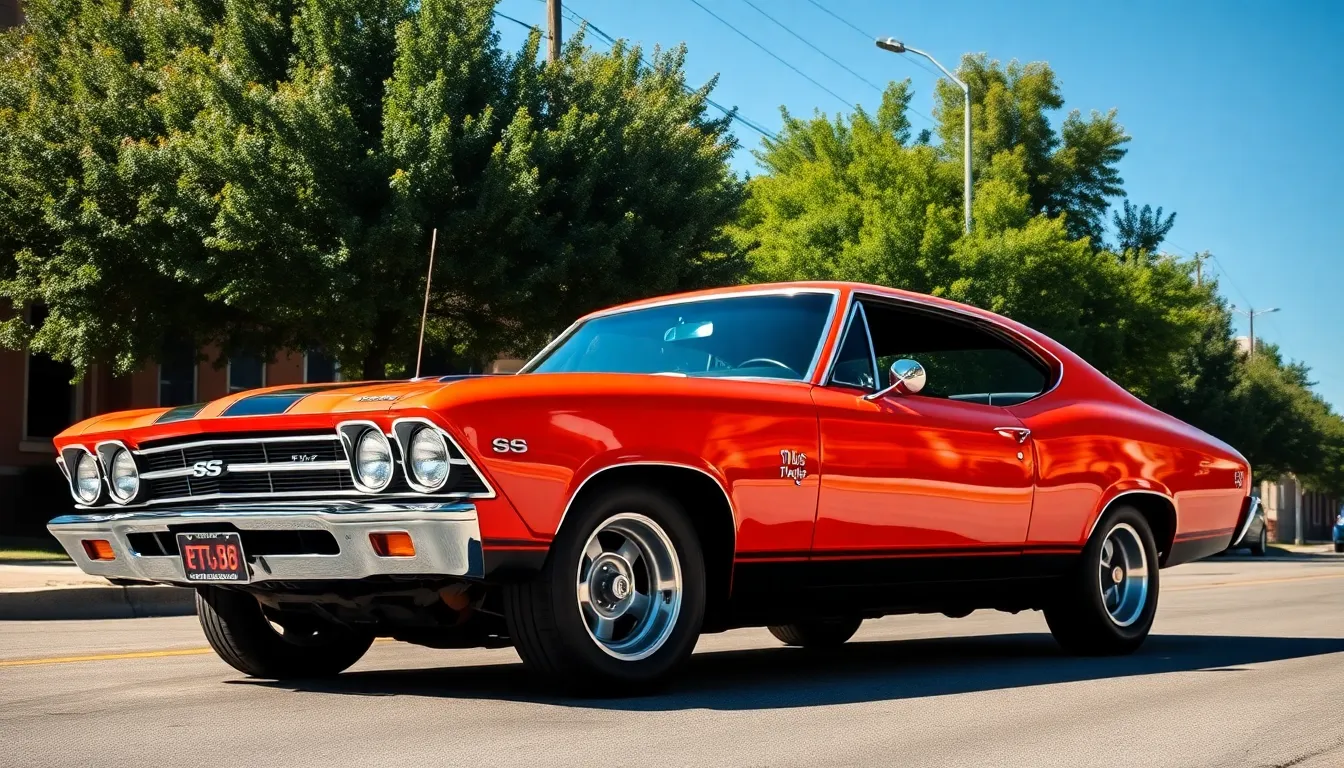
Certain muscle cars from the 1960s have transcended their original purpose to become automotive treasures. These legendary machines represent the pinnacle of American performance engineering and continue to command premium prices at auctions worldwide.
Chevrolet Chevelle SS 396/454
Chevrolet’s Chevelle SS transformed the mid-size sedan market with its perfect blend of street performance and daily drivability. We consider the 1970 Chevelle SS 454 LS6 one of the most desirable muscle cars ever produced, featuring a factory-rated 450 horsepower that actually delivered closer to 500 horsepower at the flywheel.
Production numbers make these vehicles exceptionally rare today. Chevrolet manufactured only 4,475 LS6 Chevelles in 1970, with convertible models representing fewer than 20 of that total. Collectors consistently pay between $85,000 and $150,000 for pristine examples, while numbers-matching LS6 convertibles command prices exceeding $200,000 at premium auctions.
Performance specifications separate the Chevelle SS from its contemporaries through impressive acceleration figures. Quarter-mile times of 13.12 seconds at 108 mph established the LS6 as the quickest production muscle car of its era. The massive 454 cubic inch big block engine produced 500 lb-ft of torque, enabling 0-60 mph sprints in just 5.4 seconds.
Design elements of the Chevelle SS created an unmistakable presence on American roads. Bold racing stripes, functional cowl induction hoods, and distinctive SS badges announced the car’s performance intentions. Interior appointments included bucket seats, center consoles, and optional gauge packages that monitored engine vitals.
Ford Mustang Boss 429
Ford’s Boss 429 represents the ultimate marriage of NASCAR technology and street car accessibility. We recognize this model as Ford’s response to Chrysler’s dominance in professional racing, incorporating the semi-hemi 429 engine originally developed for motorsports competition.
Production constraints created immediate collectibility for the Boss 429 Mustang. Ford produced only 1,359 examples across 1969 and 1970 model years, making every surviving car a important investment. Current market values range from $175,000 to $300,000 depending on condition and provenance, with documented racing history adding substantial premiums.
Engineering compromises required extensive modifications to fit the massive engine into the Mustang chassis. Kar Kraft, Ford’s specialty vehicle division, hand-built each Boss 429 by relocating shock towers, installing a stronger transmission tunnel, and fabricating custom engine mounts. These modifications resulted in a front-heavy vehicle that prioritized straight-line acceleration over handling balance.
Racing heritage distinguishes the Boss 429 from other Mustang variants through its professional motorsports connections. The same basic engine design powered NASCAR teams to many victories throughout the late 1960s and early 1970s. Street versions produced a conservative factory rating of 375 horsepower, though actual output exceeded 400 horsepower in most configurations.
Plymouth ‘Cuda 440 Six Pack
Plymouth’s ‘Cuda 440 Six Pack delivered Mopar’s most aggressive performance package in an affordable wrapper. We consider the 1970 model year the pinnacle of ‘Cuda development, featuring the legendary 440 Six Pack engine with three Holley two-barrel carburetors producing 390 horsepower.
Visual impact separated the ‘Cuda from competing muscle cars through bold styling cues and functional aerodynamic elements. The distinctive Shaker hood scoop moved with the engine, creating both performance benefits and dramatic visual appeal. High-impact paint colors like Plum Crazy Purple and In-Violet became synonymous with Plymouth’s rebellious image.
Market values reflect the ‘Cuda’s growing recognition among serious collectors and enthusiasts. Numbers-matching 440 Six Pack examples command prices between $75,000 and $125,000, while rare convertible models exceed $175,000 at auction. Documentation proving original drivetrain components significantly impacts final sale prices.
Performance credentials established the ‘Cuda as a legitimate competitor to GM and Ford offerings. Quarter-mile times of 13.5 seconds at 105 mph placed the 440 Six Pack among the quickest production cars available. The engine’s unique induction system provided exceptional throttle response and a distinctive intake sound that became part of muscle car folklore.
Racing Heritage That Built Reputations
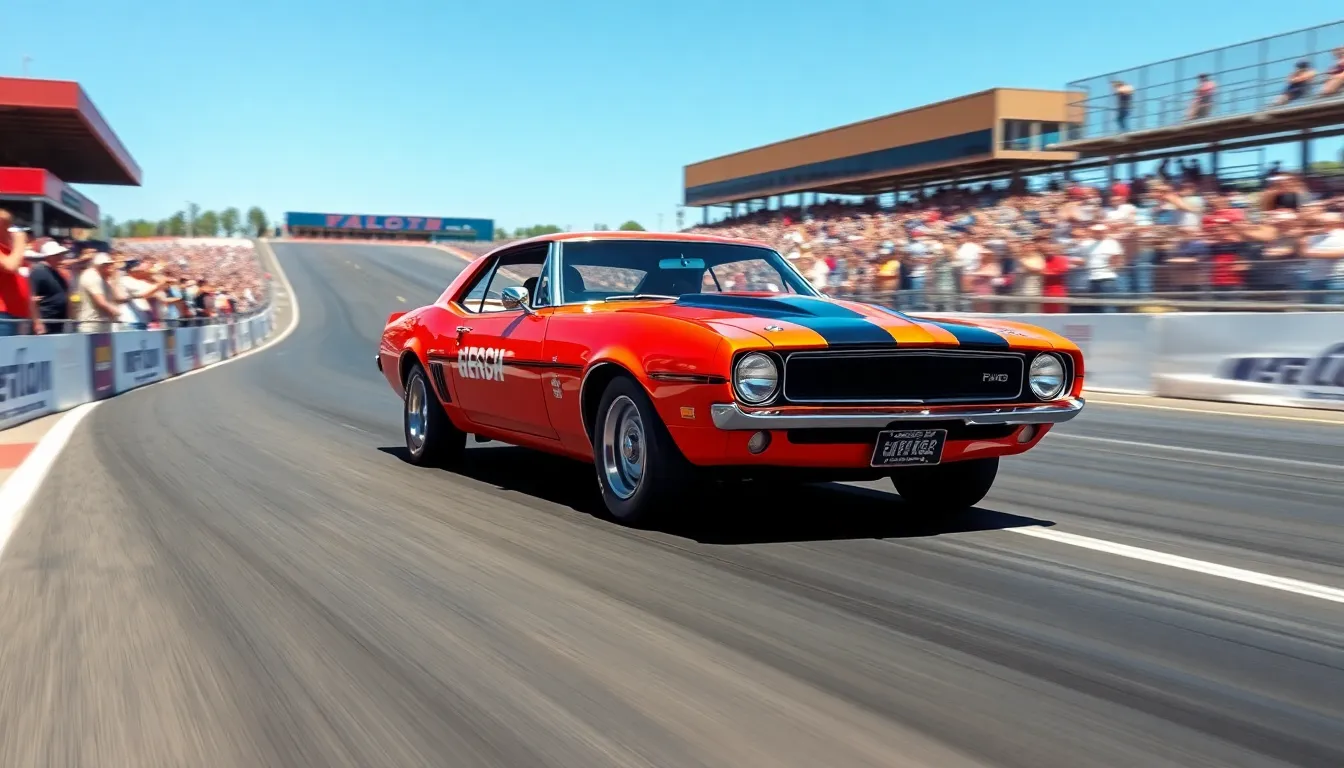
Success on race tracks defined muscle car reputations more than any marketing campaign ever could. Victory lane appearances transformed ordinary production models into legendary status symbols that enthusiasts still chase today.
NASCAR Dominance Stories
NASCAR’s premier series became the proving ground where muscle cars earned their stripes against the fiercest competition. Ford’s 427 Fairlane dominated the 1966 and 1967 seasons with drivers like Mario Andretti and Dan Gurney piloting these thunderous machines to victory. Chrysler’s 426 Hemi powered Richard Petty to his legendary 1967 championship season, securing 27 wins in a single year and cementing the engine’s reputation as the ultimate NASCAR powerplant.
Chevrolet countered with their 427 Mark IV engine in the Chevelle SS, which propelled drivers to multiple Cup Series victories throughout the late 1960s. Plymouth’s Road Runner and GTX models captured manufacturer championships in 1967 and 1968, proving that street muscle cars could translate their power directly to the NASCAR oval. Dodge’s Charger R/T became synonymous with superspeedway success, with its aerodynamic profile helping drivers achieve consistent top speeds exceeding 180 mph.
Drag Strip Legends
Quarter mile performance defined muscle car greatness, and drag strips across America witnessed countless record breaking runs. Chevrolet’s COPO (Central Office Production Order) Camaro with the L72 427 engine regularly achieved sub 13 second elapsed times, making it a dominant force in NHRA Super Stock competition. Plymouth’s 426 Hemi Cuda consistently ran 12.8 second quarter miles straight from the showroom floor, establishing benchmarks that competitors struggled to match.
Ford’s 428 Cobra Jet Mustang shocked the drag racing industry by running consistent 13.5 second times even though its conservative factory horsepower ratings. Dodge’s 440 Six Pack equipped cars became bracket racing favorites, delivering predictable performance that helped amateur racers win countless weekend competitions. Pontiac’s Ram Air IV 400 engine in the GTO proved that displacement wasn’t everything, as it regularly outperformed larger cubic inch motors in heads up competition.
Trans-Am Championship Battles
Trans-Am racing showcased manufacturer engineering prowess through intense competition between production based pony cars. Chevrolet’s Z/28 Camaro captured the 1968 and 1969 Trans-Am championships with Mark Donohue behind the wheel, proving the effectiveness of their high revving 302 small block engine. Ford’s Boss 302 Mustang dominated the 1970 season under Parnelli Jones’ guidance, demonstrating superior handling characteristics that translated directly to street versions.
Plymouth’s AAR ‘Cuda and Dodge’s Trans-Am Challenger represented Chrysler’s late entry into the series, but their 340 Six Pack engines delivered competitive performance in the 1970 season. American Motors’ Javelin SST scored upset victories throughout 1971 and 1972, proving that smaller manufacturers could compete against Detroit’s giants with proper engineering and driver talent. Pontiac’s Firebird Trans Am took its name directly from this racing series, though ironically never achieved the same level of competition success as its Chevrolet cousin.
Design Elements That Made Them Instantly Recognizable
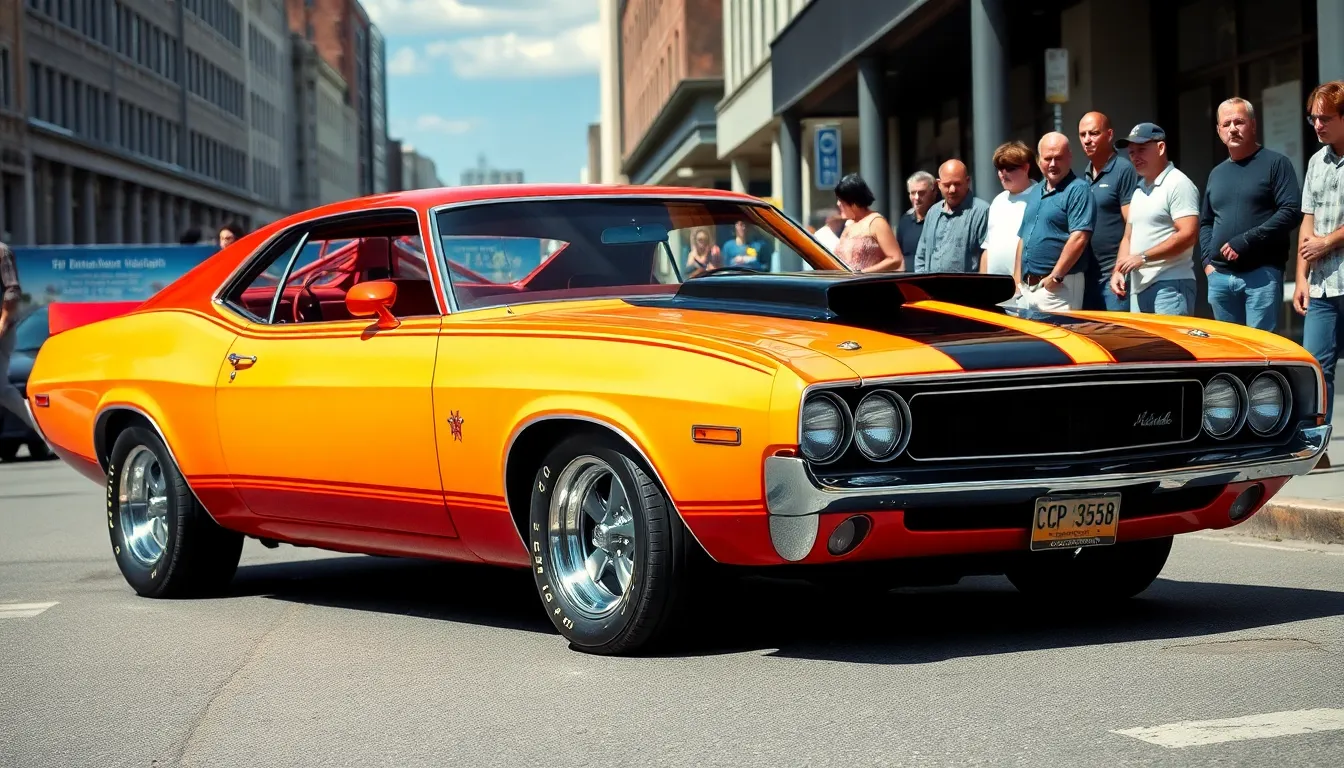
Muscle car manufacturers understood that performance needed to look as impressive as it sounded. Visual impact became just as crucial as horsepower figures in establishing these vehicles as automotive legends.
Aggressive Hood Scoops and Air Intakes
Hood scoops transformed the front profile of muscle cars into intimidating powerhouses that demanded attention on every street. Functional air intakes like those on the Plymouth Road Runner and Dodge Super Bee channeled cool air directly into carburetors, improving performance while creating an unmistakable aggressive appearance. We see cowl induction systems on models like the Chevrolet Camaro SS and Chevelle SS that not only enhanced engine breathing but also gave these cars their signature predatory stance.
Non-functional scoops served an equally important purpose in muscle car design language. Ford’s Mustang Mach 1 featured prominent hood scoops that communicated power even when they didn’t connect to the air cleaner assembly. Dodge designers created some of the most dramatic examples with the Challenger’s shaker hood scoop that moved with the engine, creating a visual connection between driver and powerplant.
Air extractors and side scoops added another layer of performance styling cues. Chevrolet’s SS models incorporated fender vents that suggested serious cooling needs, while Plymouth’s ‘Cuda featured aggressive gill-like openings behind the front wheels. These design elements told everyone within sight that they were looking at something special under the hood.
Bold Racing Stripes and Graphics
Racing stripes became the universal language of muscle car performance, instantly communicating a vehicle’s serious intentions. Chevrolet’s Camaro SS models featured twin stripes running from nose to tail, creating a visual connection to their Trans-Am racing heritage. We notice how these stripes weren’t just decoration but served as performance badges that separated high-output models from their tamer siblings.
Factory graphics packages reached their peak with models like the Plymouth Road Runner and its cartoon-inspired decals. Dodge Super Bee graphics combined bold lettering with distinctive honeycomb patterns that made these cars impossible to ignore in traffic. Ford’s Boss 302 and Boss 429 Mustangs used understated side stripes that emphasized their racing pedigree without being flashy.
Color combinations amplified the visual impact of muscle car graphics. High-contrast schemes like white stripes on Plum Crazy Purple Plymouth ‘Cudas or black stripes on Hugger Orange Camaros created combinations that became legendary in their own right. These bold graphics choices reflected the rebellious spirit of the era and helped establish each model’s unique identity in the crowded performance car market.
Muscular Body Lines and Stance
Body proportions defined the muscle car aesthetic with their distinctive combination of long hoods and short rear decks. Chevrolet’s Chevelle SS and Ford’s Torino Cobra featured pronounced hood lines that visually suggested the massive engines lurking beneath. We observe how designers stretched wheelbases and widened track widths to create the aggressive stance that became synonymous with American performance.
Flared wheel openings and bulging fender lines gave muscle cars their powerful, ready-to-pounce appearance. Plymouth’s ‘Cuda featured some of the most dramatic fender flares in the industry, accommodating wide tires while creating an unmistakably muscular silhouette. Dodge Challenger designers perfected the long hood, short deck proportions that made their car look fast even when parked.
Ground effects and spoilers added the finishing touches to muscle car stance and aerodynamics. Chevrolet’s Camaro Z28 featured front air dams and rear spoilers that improved high-speed stability while improving the car’s racing appearance. Ford’s Mustang Boss models incorporated functional aerodynamic aids that served dual purposes, improving performance while creating the aggressive visual signature that muscle car enthusiasts still recognize today.
Performance Specifications That Still Impress Today
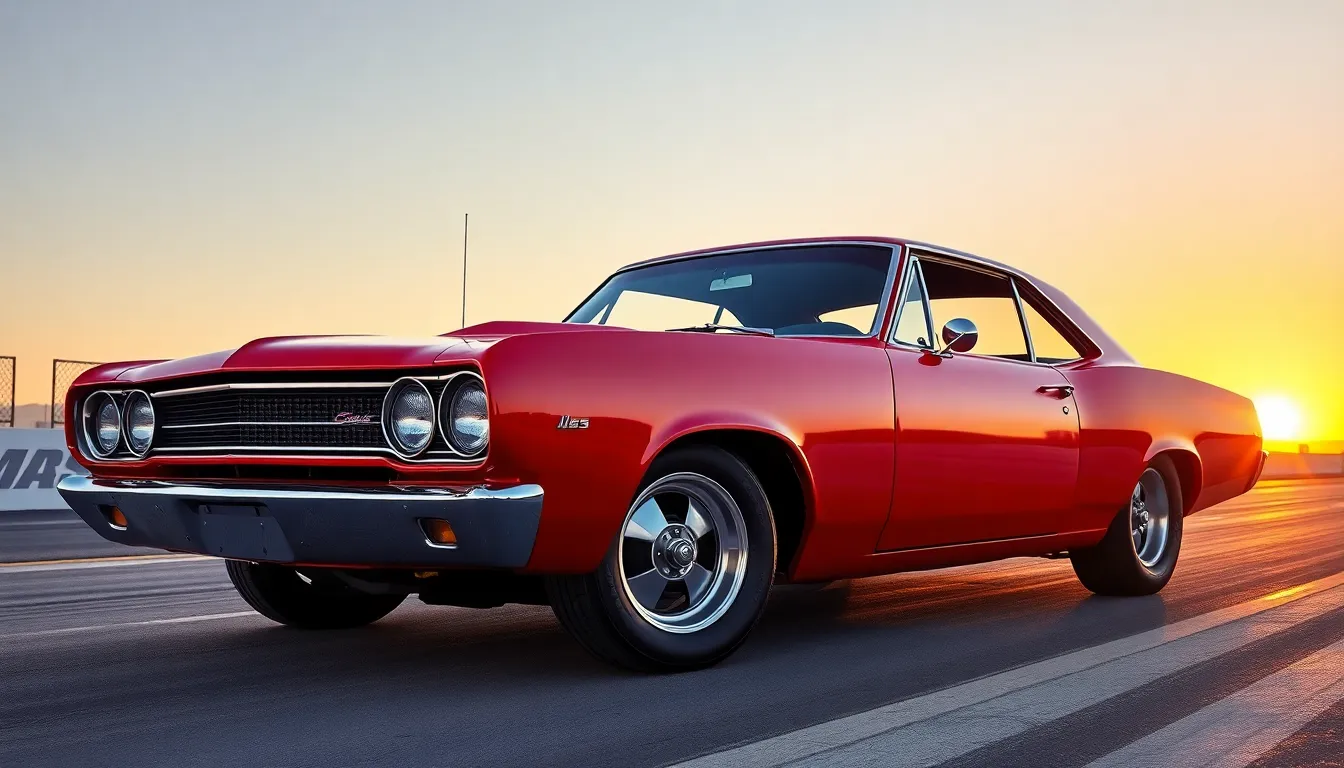
Decades later, the raw performance numbers from these iconic muscle cars continue to command respect from modern automotive enthusiasts. Today’s supercars may boast more advanced technology, but the fundamental performance metrics achieved by 60s muscle cars remain genuinely impressive.
Quarter-Mile Times and Top Speeds
Performance benchmarks from the muscle car era established standards that took decades for mainstream vehicles to match. The Plymouth Road Runner 440 Six Pack consistently delivered quarter-mile times of 13.5 seconds, while the Chevrolet Chevelle SS 454 recorded impressive 13.3-second passes at drag strips nationwide.
Top speed achievements reached remarkable heights during this golden era of American performance. The Dodge Charger R/T with its 440 Magnum engine achieved sustained speeds exceeding 130 mph, making it one of the fastest production cars available to consumers. Ford’s Mustang Boss 429 demonstrated exceptional high-speed capability with recorded top speeds of 140 mph on test tracks.
Racing heritage directly influenced these impressive quarter-mile statistics, as manufacturers developed engines specifically for drag strip dominance. The legendary Plymouth ‘Cuda 440 Six Pack recorded consistent 13.2-second quarter-mile times with trap speeds approaching 105 mph. Chevrolet’s COPO Camaro models achieved even more impressive numbers, with some examples recording sub-13-second quarter-mile runs straight from the factory.
Horsepower and Torque Numbers
Engine specifications from the 1960s established power standards that defined an entire generation of muscle cars. The Chrysler 426 Hemi produced an advertised 425 horsepower, though dyno testing often revealed actual output closer to 500 horsepower at the crankshaft.
Torque figures equally impressed performance enthusiasts, with the Chevrolet 454 LS6 generating 465 lb-ft of torque that provided incredible acceleration from standstill. Ford’s 428 Cobra Jet delivered 445 lb-ft of torque, making it one of the most responsive engines for street driving applications.
Big block engines dominated the horsepower wars throughout the decade, with manufacturers constantly pushing displacement limits. The Plymouth 440 Six Pack system produced 390 advertised horsepower but delivered significantly more power than its conservative rating suggested. Dodge’s 383 Magnum generated 335 horsepower while maintaining excellent drivability for daily use.
Small block alternatives proved that displacement wasn’t everything, as Chevrolet’s 327 L79 produced 350 horsepower in a lightweight package. Ford’s 289 High Performance engine delivered 271 horsepower with exceptional throttle response and reliability.
Acceleration Benchmarks
Zero to sixty acceleration times established these muscle cars as the quickest production vehicles of their era. The Dodge Charger R/T consistently achieved 0-60 mph times of 5.3 seconds, making it competitive with modern sports cars costing significantly more money.
Factory acceleration testing revealed impressive capabilities across multiple muscle car platforms. The Chevrolet Camaro SS 396 recorded 0-60 mph times of 5.8 seconds while maintaining excellent handling characteristics. Plymouth’s Road Runner achieved similar acceleration benchmarks with its 383 engine, reaching 60 mph in just 6.1 seconds.
Performance comparisons with modern vehicles show how advanced these muscle cars were for their time period. The Ford Mustang Mach 1 with its 428 Cobra Jet engine delivered 0-60 acceleration in 5.5 seconds, matching many contemporary performance cars. Pontiac’s GTO 455 recorded impressive 5.7-second 0-60 times while offering comfortable seating for four passengers.
| Model | 0-60 mph Time | Quarter-Mile Time | Top Speed |
|---|---|---|---|
| Plymouth Road Runner 440 Six Pack | 5.1 seconds | 13.5 seconds | 125 mph |
| Chevrolet Chevelle SS 454 | 5.4 seconds | 13.3 seconds | 130 mph |
| Dodge Charger R/T 440 | 5.3 seconds | 13.7 seconds | 132 mph |
| Ford Mustang Boss 429 | 5.1 seconds | 13.1 seconds | 140 mph |
| Pontiac GTO 455 | 5.7 seconds | 13.9 seconds | 120 mph |
Market Values and Investment Potential
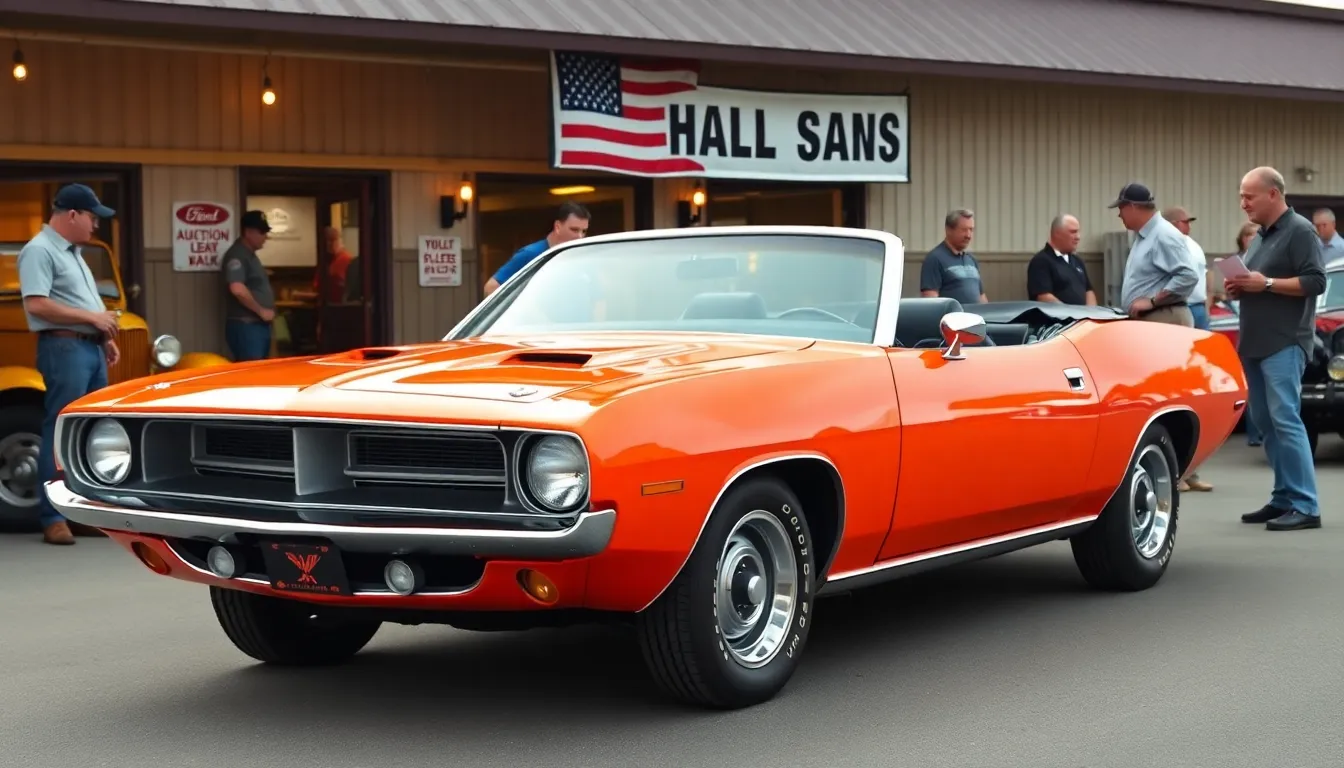
Today’s muscle car market reflects decades of appreciation and collector demand. These automotive icons have transformed from affordable performance cars into valuable investment assets that consistently outperform traditional markets.
Auction Record Holders
Barrett-Jackson and RM Sotheby’s auctions regularly witness muscle car sales exceeding six figures. We’ve seen the 1970 Plymouth ‘Cuda 440 Six Pack convertible achieve $4.8 million at a 2014 Mecum auction, setting the bar for American muscle car values. Original Shelby Cobra 427s consistently command $1.5 to $3.2 million, with documented racing provenance pushing prices even higher.
Documented examples like the 1969 Chevrolet Camaro ZL1 have reached $1.1 million at auction, representing the pinnacle of factory performance engineering. Numbers-matching 1970 Plymouth Hemi ‘Cuda convertibles routinely sell for $2.5 to $4.5 million, depending on color combinations and documentation. Meanwhile, 1969 Dodge Charger R/T 440 Six Pack models have achieved $275,000 to $425,000 at major collector car auctions.
Factory lightweight models command premium prices across all auction houses. We’ve witnessed 1969 Chevrolet COPO Camaro 427s sell for $650,000 to $875,000, reflecting their limited production and drag strip heritage. Original 1968 Shelby GT500KR Mustangs consistently achieve $200,000 to $350,000, with convertible examples reaching the upper end of that range.
Restoration vs Original Condition
Numbers-matching, unrestored muscle cars consistently outperform their restored counterparts in today’s collector market. We’ve observed original paint and interior examples commanding 40% to 60% higher prices than professionally restored vehicles. Survivor cars with documented low mileage represent the holy grail for serious collectors and investors.
Professional restorations can enhance value when executed to concours standards, but they rarely achieve the premiums of original condition examples. We recommend focusing on authenticity verification through documentation, broadcast sheets, and engine casting numbers. Original drivetrain components including engines, transmissions, and rear axles significantly impact market value across all muscle car segments.
Partial restoration projects often yield better returns than complete ground-up restorations. We’ve seen strategic mechanical refreshing combined with preserved original cosmetics achieve optimal value retention. Quality restoration shops specializing in muscle cars typically charge $75,000 to $150,000 for complete concours-level work on premium models.
Future Collectibility Trends
Generational demographics suggest continued strength in muscle car values as Baby Boomers pass collections to younger enthusiasts. We anticipate increased demand for documented performance variants like Ram Air, Six Pack, and Super Stock models. Factory lightweight editions and special packages will likely maintain their premium status in collector markets.
Digital documentation and blockchain verification are emerging as value-protection tools for high-end muscle car transactions. We expect to see increased emphasis on provenance documentation including original sales receipts, service records, and ownership history. Electric vehicle proliferation may actually enhance internal combustion muscle car desirability among collectors seeking authentic automotive experiences.
International buyer interest continues expanding muscle car market reach beyond traditional American collectors. We’ve witnessed increased European and Asian demand for iconic models like the Shelby Cobra, Boss 429 Mustang, and Hemi-powered Mopar vehicles. This global appreciation suggests sustained long-term value growth for properly documented examples.
Finding and Buying Your Dream 60s Muscle Car
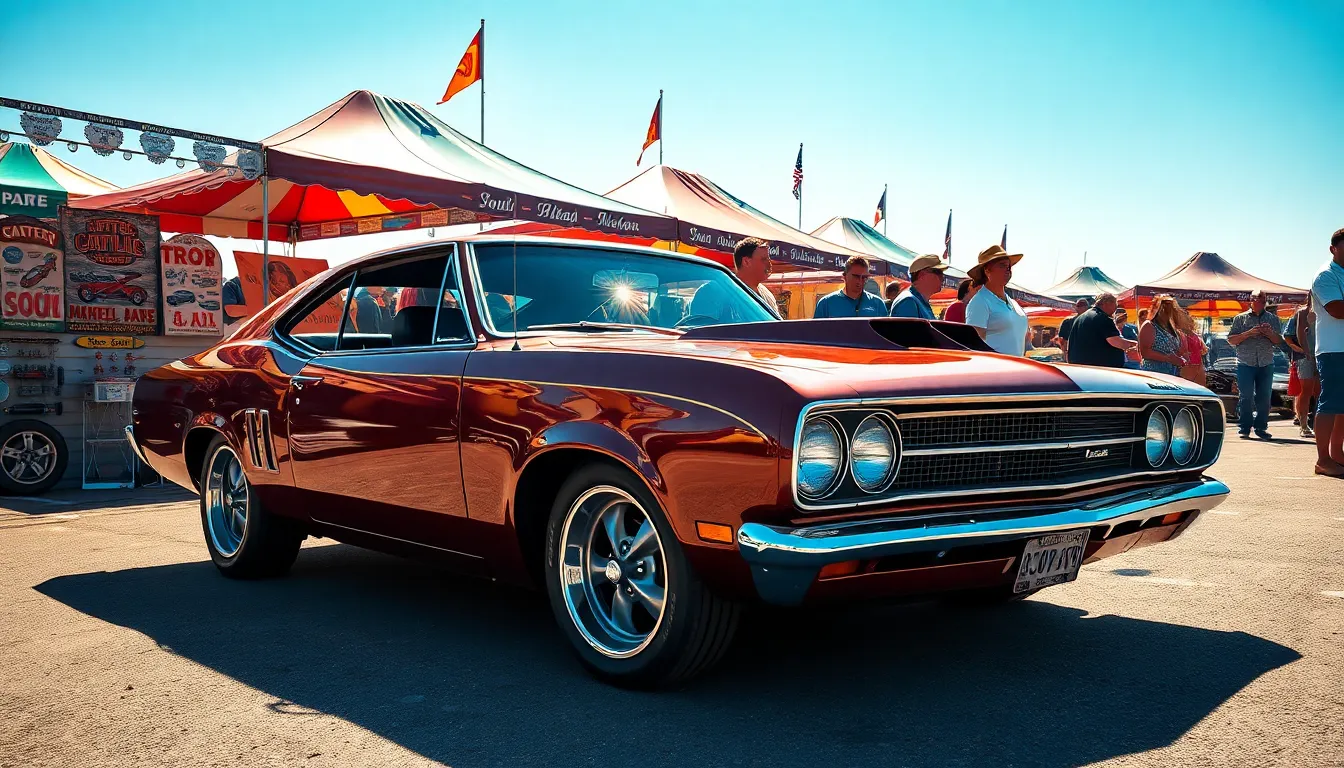
Acquiring authentic 60s muscle cars requires careful research and a keen understanding of market dynamics. These automotive treasures demand serious attention to detail and thorough investigation before making any financial commitment.
Where to Search for Authentic Examples
Barrett-Jackson and RM Sotheby’s auctions consistently feature verified muscle car collections with comprehensive documentation. We’ve observed that these premium venues attract serious collectors who maintain detailed provenance records for their vehicles.
Classic car dealerships specializing in American muscle provide professional inspections and often offer limited warranties on their inventory. These establishments typically stock numbers-matching examples and can verify authentication through their industry connections.
Muscle car shows and swap meets offer direct access to private owners who’ve maintained their vehicles for decades. We recommend attending events like the Muscle Car and Corvette Nationals, where enthusiasts gather with original examples they’ve preserved since new.
Online platforms including Hemmings Motor News, ClassicCars.com, and specialized muscle car forums connect buyers with sellers nationwide. These digital marketplaces allow detailed photo documentation and communication before arranging inspections.
Estate sales and barn finds occasionally yield remarkable discoveries, though these opportunities require immediate action and thorough mechanical assessment. We’ve seen original-owner vehicles emerge from long-term storage with surprising preservation levels.
Red Flags to Avoid When Shopping
Rust damage around rear wheel wells, floor pans, and frame rails indicates structural compromise that can cost $15,000 to $30,000 to repair properly. We always inspect these critical areas with flashlights and magnets before considering any purchase.
Mismatched paint colors or panel alignment issues often signal collision damage or extensive bodywork that wasn’t disclosed. These problems can dramatically reduce value and indicate hidden structural issues that affect safety and performance.
Non-original engines swapped without documentation destroy authenticity and slash market values by 40-60% compared to numbers-matching examples. We verify engine codes, casting numbers, and assembly dates match factory records before proceeding with negotiations.
Excessive modifications from previous owners frequently compromise originality and can be expensive to reverse. Street rods, pro-touring builds, and racing conversions appeal to exact buyers but typically bring lower prices than restored originals.
Missing documentation including build sheets, warranty cards, and ownership history creates uncertainty about authenticity and previous maintenance. We consider complete documentation essential for verifying legitimate muscle car provenance.
Documentation and Numbers Matching Importance
Engine block stamping codes must match the vehicle identification number’s final digits to confirm factory-original powerplant installation. We cross-reference these numbers with manufacturer databases to verify authentic engine displacement and assembly dates.
Transmission identification through casting numbers and date codes helps establish matching drivetrain components that increase overall value significantly. Numbers-matching four-speed manual transmissions can add $8,000 to $15,000 to final sale prices.
Documentation packages including original build sheets, window stickers, and warranty booklets provide irrefutable proof of factory specifications and options. We’ve seen complete documentation packages increase vehicle values by 25-40% over similar cars without paperwork.
Cowl tag information contains critical production data including paint codes, trim specifications, and assembly plant details that verify authenticity. These metal tags are difficult to counterfeit and provide essential verification for serious collectors.
Professional authentication services like Marti Auto Works for Ford products offer detailed reports that confirm original specifications and production sequences. We recommend these services for high-value purchases where documentation questions exist.
Conclusion
The 1960s muscle car era represents a golden chapter in American automotive history that we’ll never see replicated. These powerful machines didn’t just deliver extraordinary performance – they created a cultural movement that continues to captivate enthusiasts today.
We’ve witnessed how these automotive legends have evolved from affordable street racers into coveted collector pieces worth hundreds of thousands of dollars. Their influence extends far beyond the dragstrip reaching into popular culture and establishing benchmarks that modern vehicles still chase.
For those ready to join this passionate community we recommend approaching muscle car ownership with thorough research and professional guidance. The market rewards authenticity and originality making proper documentation essential for any serious purchase.
The legacy of 60s muscle cars proves that true automotive greatness transcends generations creating lasting value for collectors and driving enthusiasts alike.
Frequently Asked Questions
What defines a 1960s muscle car?
A 1960s muscle car is defined by three key elements: raw power from large V8 engines, affordability for average Americans, and significant cultural impact. These vehicles featured massive engine displacement in mid-size chassis, delivering extraordinary acceleration and quarter-mile performance while remaining accessible to blue-collar workers.
Which manufacturers dominated the muscle car era?
The “Big Three” American manufacturers—Ford, Chevrolet, and Chrysler—shaped the muscle car landscape. Ford introduced the Mustang standard, Chevrolet created the Super Sport performance badge, and Chrysler’s Dodge and Plymouth divisions delivered iconic models with powerful Hemi engines and bold designs.
What’s the difference between small block and big block engines?
Small block engines like Chevrolet’s 327 and Ford’s 289 were lightweight with impressive power output. Big block engines such as Chrysler’s 426 Hemi and Ford’s 428 Cobra Jet delivered higher horsepower and torque figures, revolutionizing performance with their massive displacement and raw power capabilities.
Which muscle cars are most valuable today?
The most coveted models include the Chevrolet Chevelle SS 396/454 (up to $200,000), Ford Mustang Boss 429 ($175,000-$300,000), and Plymouth ‘Cuda 440 Six Pack ($75,000-$125,000). Rare convertibles and numbers-matching examples command premium prices at auctions.
How important was racing heritage to muscle cars?
Racing success elevated production models to legendary status. NASCAR dominance by Ford’s 427 Fairlane and Chrysler’s 426 Hemi, drag racing achievements by Chevrolet COPO Camaro, and Trans-Am victories by Z/28 Camaro and Boss 302 Mustang all contributed to building muscle car reputations and legacy.
What design elements made muscle cars recognizable?
Muscle cars featured aggressive hood scoops and air intakes, bold racing stripes, muscular body lines, flared wheel openings, and spoilers. These visual elements were as crucial as performance, creating an instantly recognizable aesthetic that communicated power and performance to enthusiasts.
How do 1960s muscle car performance numbers compare today?
Many muscle cars achieved 0-60 mph times competitive with modern vehicles. Models like the Plymouth Road Runner 440 Six Pack and Chevrolet Chevelle SS 454 set quarter-mile benchmarks that took decades for mainstream vehicles to match, demonstrating their enduring performance legacy.
Are muscle cars good investments?
Yes, muscle cars have evolved from affordable performance vehicles into valuable investment assets, often outperforming traditional markets. Auction records show significant appreciation, with original, numbers-matching examples consistently commanding higher prices than restored models due to their authenticity and rarity.
Where can I find authentic 1960s muscle cars for sale?
Reputable sources include prestigious auctions like Barrett-Jackson and RM Sotheby’s, established classic car dealerships, muscle car shows and events, and verified online platforms. These venues offer better authentication and documentation than private sales or unknown sources.
What should I avoid when buying a muscle car?
Key red flags include extensive rust damage, mismatched paint indicating accidents or poor restoration, non-original engines that reduce authenticity, and missing documentation. Always verify numbers matching and consider professional authentication services for high-value purchases to ensure legitimacy and proper market value.

